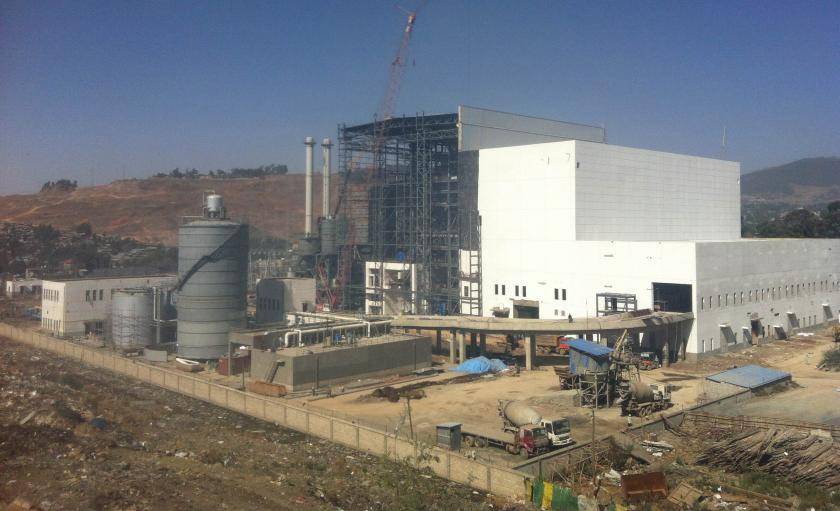Making A Mark In Ethiopia: Meet The Unsung Hero Who Gave Life To Africa’s First Waste-To-Energy Plant

Sometime in August last year, Ethiopia became the first African country to erect a fully-dedicated waste-to-energy facility.
The Reppie Project, as it is called, now sits atop the old Koshe landfill; the site of a devastating landslide that claimed 114 lives in March 2017. The facility is situated on the outskirts of Ethiopia’s capital, Addis Ababa, and it is expected to handle up to 1,400 tons of rubbish daily; that’s around 80 percent of the garbage churned out from the city every day.
By processing and converting these waste materials into usable forms of energy, the newly-constructed plant will, in turn, supply the city with up to 30 percent of its household electricity needs, while also helping to cut down on air and land pollution in accordance with global initiatives.

Source: face2faceafrica.com
While the Ethiopian government has been lauded for their role in the historic development – especially the thoughtful decision to partner with a trio of firms from Singapore, China, and Denmark; a move that ultimately brought the project to a successful completion – there’s a certain, relatively less-known Ethiopian who was just as instrumental to the development (if not more), and could be considered something of an unsung hero.
The name is Samuel Alemayehu and for as long as the project lasted, it seemed he had something of a personal vendetta with the waste crisis in his country. That’d explain why, at times, the mountain of garbage in his country seemed like Everest, while he had all the looks of an intrepid climber who was unfazed by the mammoth size and was determined to conquer.
Ethiopia plays the role of unfortunate host to one of the largest waste landfills in Africa which appears to have been the final resting place for all the garbage and waste from Addis Ababa for the best parts of 50 years. The Repi dumpsite is a rubbish-laden, vast area of land which is known to span an area of land so large that popular opinion has it that about 36 football pitches could be carved out of it.
The sheer size of the dumpsite and gigantic heaps of rubbish that dot the landscape like a “rubbish quary” makes it quite the haven for all forms of pollution, spreading diseases that could even lead to death in worse case scenarios.
For several years, attempts have been made by Ethiopian governments to control the waste situation, but little progress has been made. At least, that was the case until when one of the country’s very own illustrious sons took up the assignment to clear out the dumpsite by putting all that waste to use.

Source: ronbrown.org
Alemayehu, who was trained at Stanford, is the Co-Founder and Managing Director of Cambridge Industries. The serial entrepreneur, who can also be linked to a number of notable tech ventures, put his company at the forefront of the construction of the historic waste-to-energy plant and ultimately brought it to life.
Where most people who looked at the mountain of waste at the dumpsite saw a big problem that should be done away with or made to disappear somehow, Alemayehu saw a resource that could well solve yet another problem in his country.
It was a case of the proverbial “killing-two-birds-with-a single-stone” analogy. His plan was going to take care of the waste problem, as well as offer some respite to the power problem that is prevalent in parts of the country.
And so, when he sounded the idea of turning the waste turned out from Addis Ababa on a daily into energy that could power communities to the right ears, he had effectively put himself on the cusp of something big. Samuel Alemayehu oversaw the construction of the facility. In many ways, he brought Africa’s first waste-to-energy plant to life.
Alemayehu moved to the United States with his parents when he was a child. He was able to get a good education owing to the sacrifices of his folks who took on numerous odd jobs and worked crazy hours to ensure that this bright son of theirs had the best quality education.
Their little boy proved quite the egghead on his part, studying hard and earning scholarships to a number of prestigious universities in the United States, of which he opted for Stanford where he had been offered the opportunity to study Engineering on a full scholarship.
Upon the completion of his studies abroad, Alemayehu returned to his homeland, Ethiopia, with one thing in mind: to improve lives back home by putting his wealth of knowledge and resources to good use.
Learning about the waste situation in his country was particularly disturbing for him as the young Ethiopian engineer also happens to be an advocate for the protection of the environment. All it took was a couple of visits to the vast dumpsite and the “aha! moment” arrived.
Alemayehu had the idea and the plan, but the resources were lacking. So, he worked his network of contacts who got him in the same room as the right people. He eventually spearheaded the entire project and brought it to a fruitful completion. What used to be vast landfill covered with garbage is now the site of a one-of-a-kind waste-to-energy plant that eliminates waste and produces usable electricity.

In waste-to-energy incineration plants, rubbish is burned in a combustion chamber. The resulting heat is used to boil water until it turns to steam, which drives a turbine generator that produces electricity. In some ways, it is hoped that the success of the project in Ethiopia will inspire similar moves in other African countries facing waste management problems.
“African cities have seen explosive growth in the past three decades and have outgrown the infrastructures planned for them,” he says.
“We believe these plants will create for African megacities a modern, multipurpose infrastructure, using new technology, which will enable them simultaneously to dispose of waste, generate sustainable energy, clean and reuse water, recycle valuable resources, generate industrial grade steam for use by other businesses and, most importantly, do all this in one facility located safely within city limits.”
This resounding achievement adds yet another feather to Ethiopia’s hat; the East African country wants its pursuit of middle-income status to become reality in the near future and it may well be on course.
In Ethiopia – just as it could be for countries like Kenya, Uganda, Cameroon, Senegal, and Djibouti who seem to be next in line for Alemayehu’s touch of genius, waste-to-energy incineration could serve up a quadruple of victories.
The technology is known to prove quite useful in such areas as saving land space, generating electricity, preventing the release of toxic chemicals into groundwater, and reducing the release of methane — a potent greenhouse gas generated in landfills — into the atmosphere. Now, that’d be hard to beat.
Featured Image Courtesy: tadias.com